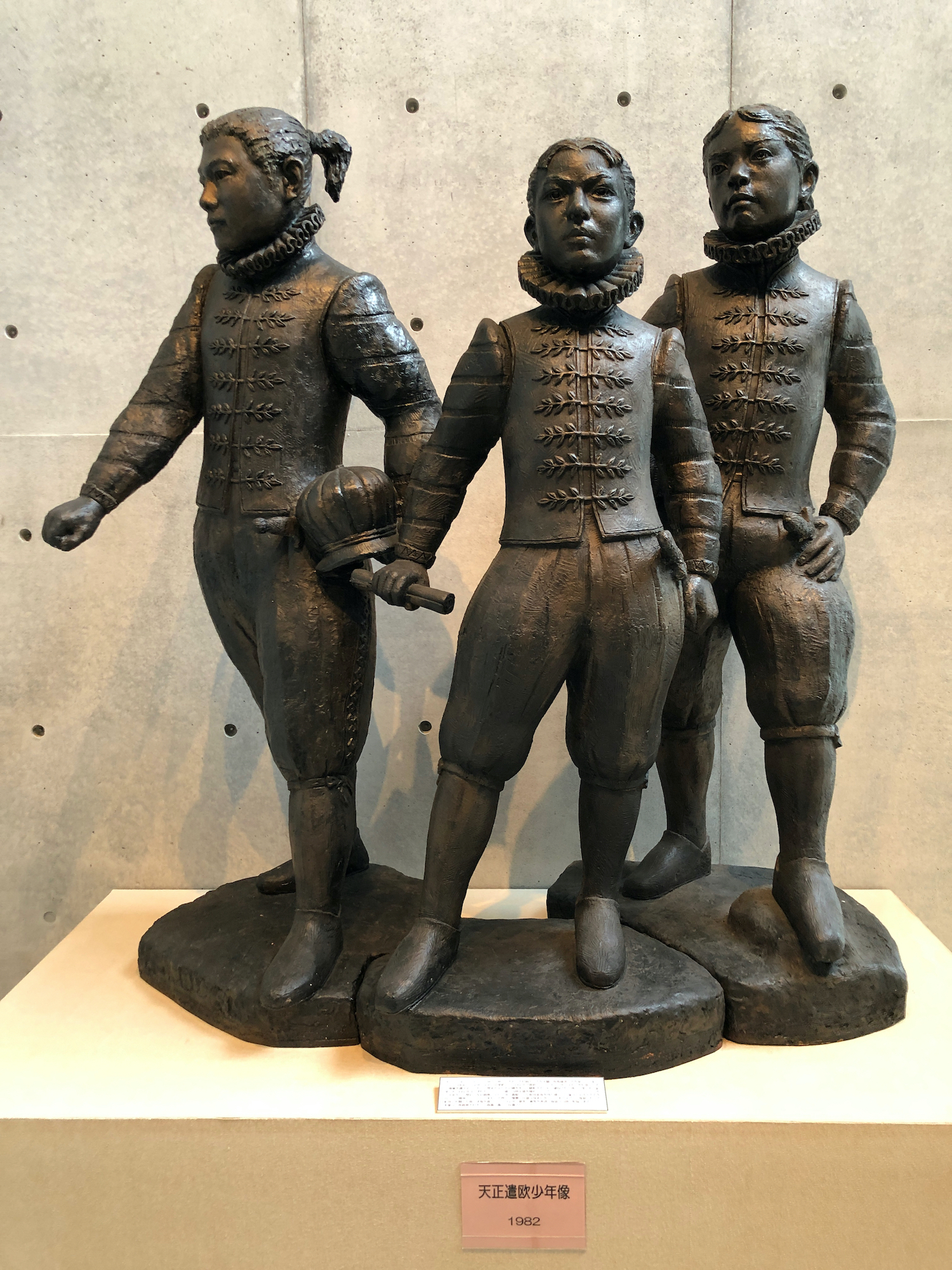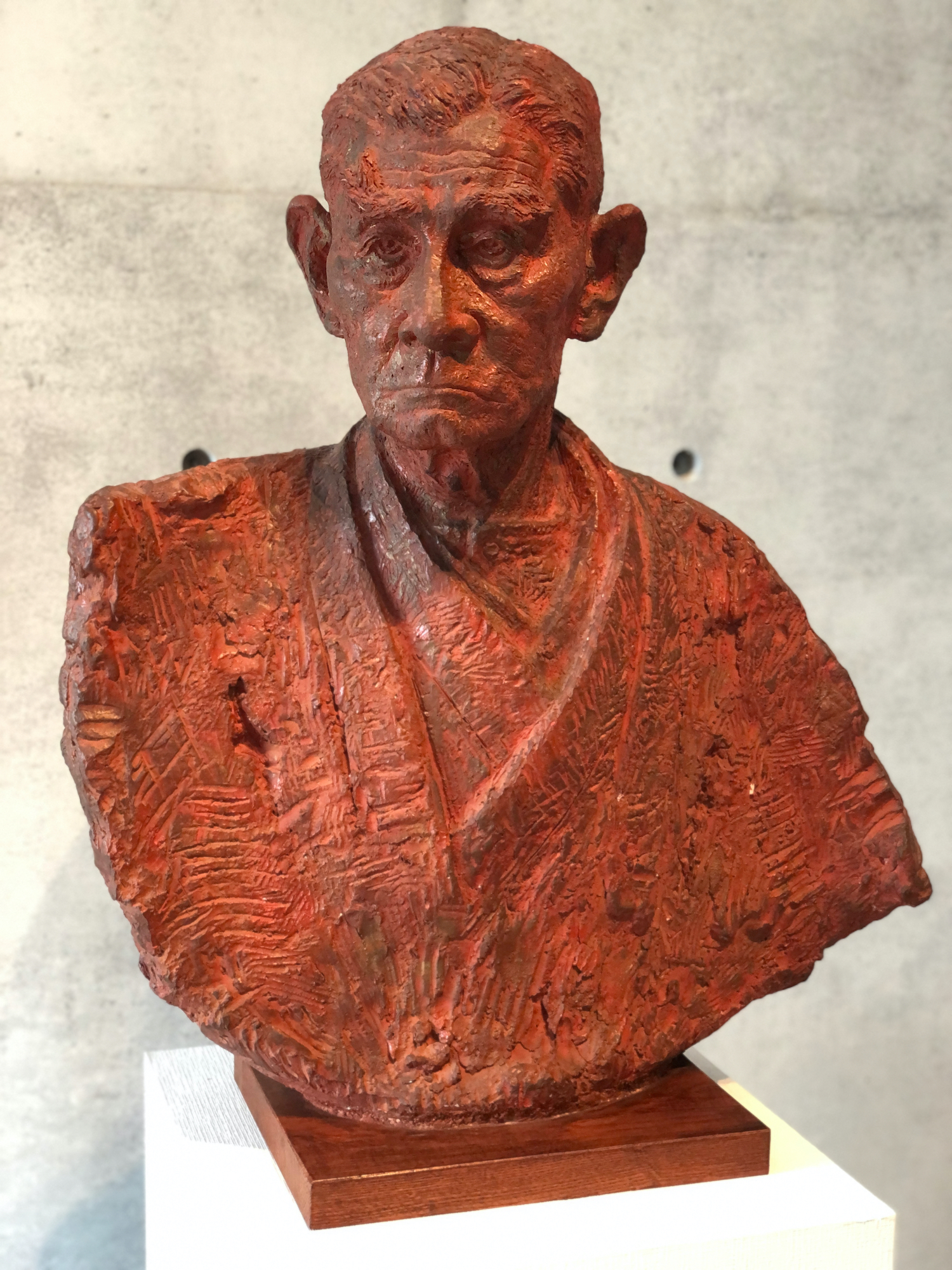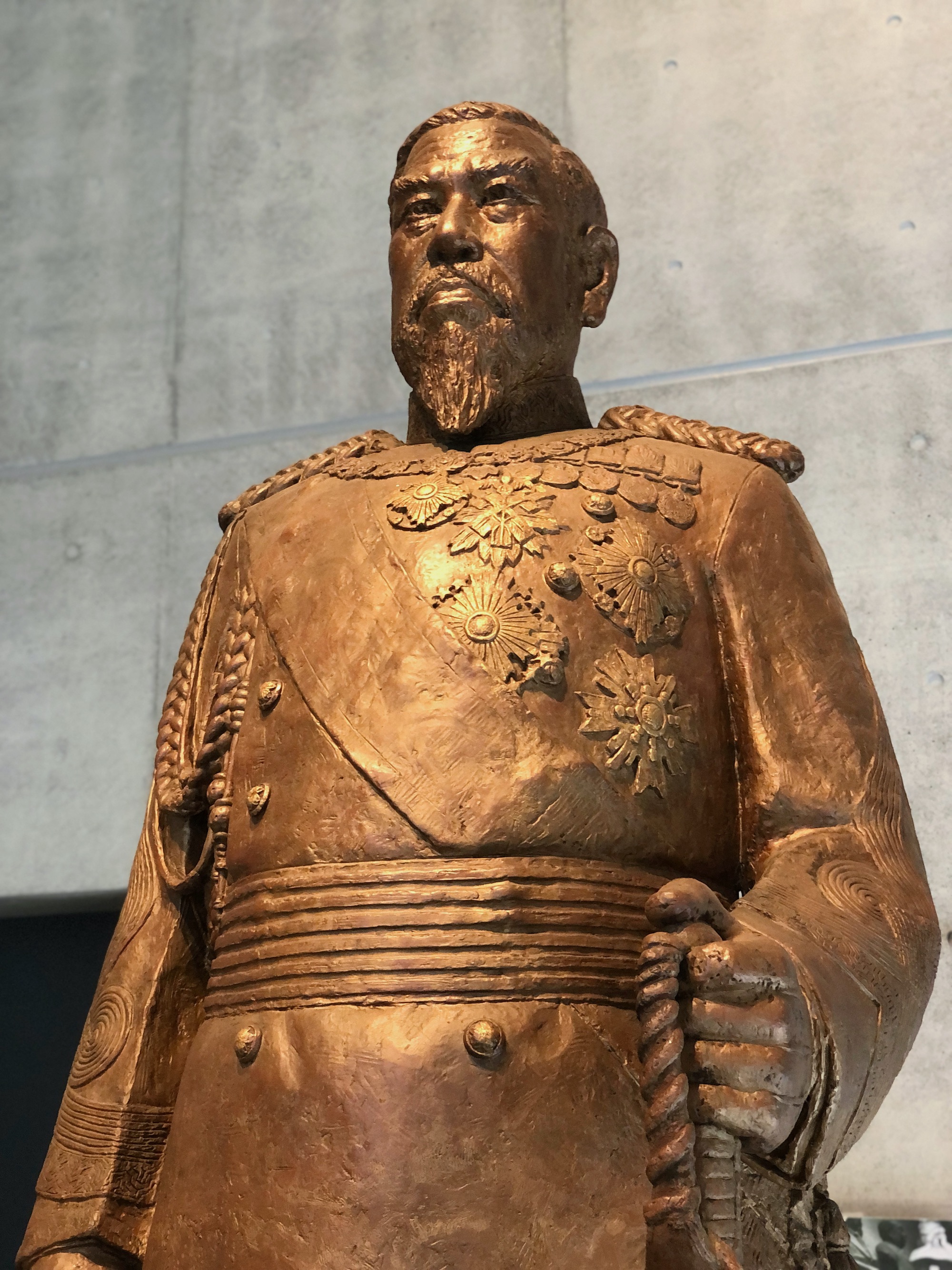In 1971 a surprising archeological discovery was made on Iki island: the remains of a stegadon (in fact, the remains of two). While mammoths and mastodons have shaggy hair, stegadons have hide like modern elephants and their tusks go outward, which also is apparently different than other prehistoric elephants. Here is a picture of me hanging out with one… well a statue of one:

It’s a fun statue for visitors to take pics in front of. But right beside the stegadon is an art museum dedicated to a famous artist born on Iki: Koganemaru Ikuhisa (小金丸幾久). Born in 1915, Koganemaru has pieces all over Japan. You might be familiar with the “Oath of Peace” outside of Ōimachi St in Shinagawa (Tokyo). Or if you have been to Sasebo on Kyushu, you might have seen the massive statue at the Urakami Repatriation Peace Park (here are some Google Images of it… it is very much in Koganemaru’s style of abstract women). I haven’t been to that repatriation site but I have visited the Maizuru Repatriation Memorial Museum where 6.6M Japanese landed from Manchuria and Soviet improsonment after WWII. Anyways, a couple of months ago I was in Omura city and stopped to see a statue depicting the first Japanese embassy to Europe, a group of 12 year old boys who went over in the late 16th C. Turns out this piece too was a Koganemaru! I didn’t know that until I walked into his memorial hall on Iki, close to that stegadon. Prehistorically predetermined?
Below are some samples of his work on display in the hall. (These pics are all on Flickr as well if you want to see them bigger.)





All the above are life-size, except the Meiji emperor who is 2x. As you can see Koganemaru primarily worked in metal. It is quite stunning to see these in person, and not being a connoisseur, I have no idea how he made them. There are quite a few effects showing off his different techniques.
Koganemaru’s last statue, erected in 1997, is just across the bay from my house. It is of Shōni Suketoki, a local hero who saw his first battle against invading Mongols at the age of 12. In the second Mongol invasion at Iki, at the age of 18, he led a force to once again defend Japan. This time he was killed in battle. A local park is named after him, and his epic statue is right at the front of the Ashibe ferry terminal.

Statues in Japan actually have a very interesting history. If you want to learn a little more about public history and monuments, check out this podcast on the politics of public statues and monuments in Japan with Dr. Sven Saaler →

